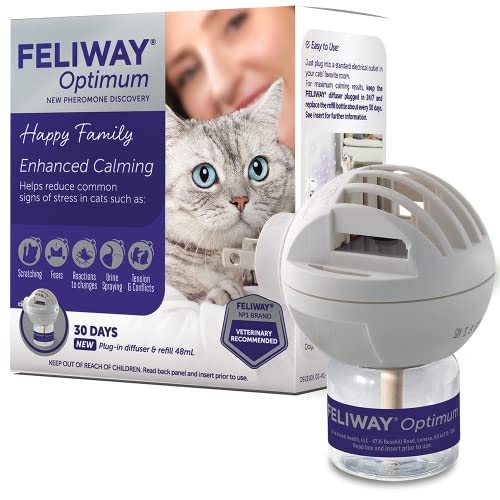
Beginner Pet Ideas For Kids And Adults
Pets for Kids and Adults: Choosing the Right One for Your Family
Pets can provide companionship and love to children, but they can also bring a lot of stress and anxiety when it comes to choosing the right one. For adults, the decision of whether or not to get a pet can be daunting as well. In this article, we will discuss some of the factors to consider when choosing a pet for your family, as well as some of the best pets for different age groups.
What Are Some Of The Ideal Pets For Kids And Adults?
One of the great things about pets is that they provide companionship and love in addition to providing physical and emotional support. Pets can also help teach children important life lessons such as responsibility, how to behave around other people and animals, and how to work together as a team. However, not all pets are appropriate for all families. That’s why it’s important to consider what kind of pet is right for your family before you make a purchase.
Here are some of the ideal pets for kids and adults:
1. Sea Monkeys are one of the cutest and most unique pets that are both kid- and adult-friendly. They’re playful and entertaining, but also intelligent and easy to care for. They require little upkeep, making them a perfect pet for families who have limited time or resources.
2. A dog or cat. These animals are generally considered to be the most suitable for both children and adults, because they’re typically friendly and loveable. They can provide emotional support and play an important role in a child’s development. Cats in particular can help teach children how to problem solve and learn new skills. Bulldogs, golden retrievers, Labradors, poodles, seagulls, shih tzus and schnauzers are some of the breeds that are commonly chosen as pets by kids and adults alike.
3. A hamster or gerbil. These small rodents make great pets because they ’re easy to care for and provide a lot of entertainment. They’re also relatively low-maintenance, meaning that you won’t have to spend a lot of time cleaning them up or training them. Be sure to get a hamster or gerbil that is the appropriate size for your child; they shouldn’t be bigger than an adult’s hand, and smaller ones might be suitable for children as young as five years old.
4. A snake. Although snakes can be intimidating, they make great pets if you know how to handle them properly. Snakes are typically non-aggressive and love to be around people, which makes them great companions for kids who are afraid of animals. Some of the most popular snake species for kids include the ball python, the boa constrictor and the anaconda.
5. A turtle or tortoise. These animals are slow-moving but very gentle, making them perfect for kids who are afraid of animals or those who don’t have the time or patience to care for a pet that requires regular exercise. Turtles and tortoises come in a variety of shapes and sizes, so there’s sure to be a turtle or tortoise that is the perfect fit for your child.
6. A fish. Fish are a great option for kids who want a pet that doesn’t require a lot of care. They’re easy to feed and maintain, and they provide entertainment by swimming around in their aquarium or pond. Some of the most popular fish for kids include goldfish, koi, cichlids, plecos and guppies.
7. An insect. Insects make great pets because they’re low-maintenance and relatively inexpensive to care for. You won’t need to buy any special food or supplies for them, and they usually don’t require a lot of attention. Some of the most popular insect species for kids include beetles, cockroaches, locusts and spiders.
8. A reptile. These animals require a lot of care and attention, but they’re worth it if you’re looking for a pet that your child can eventually take care of themselves. Some of the most popular reptile species for kids include lizards, snakes and turtles.
9. A amphibian. These animals are often considered to be the most difficult pets to take care of, but they make great companions for kids who are interested in learning about conservation. Some of the most popular amphibian species for kids include frogs, salamanders and newts.
10. A gecko. Geckos are one of the smallest pet species, and they make great pets because they’re easy to care for and provide a lot of entertainment. They require very little care, and you can usually find them in cages that are small enough to fit on a desk or counter.
11. A pet iguana. These animals are difficult to care for and require a lot of time and energy, but they make great pets for kids who are interested in reptiles. They’re also relatively small, making them easy to take care of.
12. A pet parrot. These animals are popular among kids because they’re usually very friendly and easy to take care of. They require a lot of attention, but that’s usually not a problem for kids who have plenty of time to spend with their pet. Some of the most popular pet parrots include canaries, macaws and toucans.

$204.99
Types Of Pets For Kids And Adults
There are many different types of pets for kids and adults, so it’s important to select the right one for your family. Some common types of pets for kids include: dogs, cats, hamsters, parrots, and fish. Dogs are the most popular type of pet for kids, followed by cats. Hamsters and fish are also popular choices for kids, but they may not be the best choice for every family.
Some families choose to get a pet rabbit or a guinea pig instead of a dog or cat. Parrots are another type of pet that can be fun and entertaining for kids, but they can also be expensive to keep and care for. It’s important to think about what kind of pet would be the best fit for your family before you make a decision.
Adopting A Pet From A Shelter Or Rescue Organization
If you’re thinking of adopting a pet, consider adopting from a shelter or rescue organization. These animals have been through a lot and may be in need of a home more than your average pet. Not only do these animals usually come with less personality quirks, but they’re also usually cheaper and have lower health care expenses.
Advantages And Disadvantages Of Having A Pet
Advantages of having a pet: Pets provide companionship and emotional support, help reduce stress and anxiety, improve social interaction, and provide exercise. Pets can also be a source of comfort in times of sadness or distress.
Disadvantages of having a pet: Pets can require financial resources, time, and attention; they can be expensive to care for; they can be a nuisance when they need to be taken outside; and some pets may be dangerous or cause damage to property.
Types Of Pets To Consider For Kids
Pets are a great way to teach children important life skills, provide companionship, and relieve boredom. However, not all pets are appropriate for all families. Some pets are better suited for young children while others are better suited for older children or adults. Here are three types of pets to consider when choosing the right one for your family:
1. Birds: Birds can be a great way to teach children about nature and the importance of conservation. They can also be entertaining, providing hours of fun for kids. However, birds may be too noisy for some families and can easily escape. If you’re looking for a pet that will stay within your home, a bird is likely not the best option.
2. Rabbits: Rabbits are another type of pet that can be great for teaching children about nature and conservation. They’re low-maintenance and easy to care for, making them perfect for kids who want a pet but don’t want one that requires a lot of attention. However, rabbits can be fragile and may not be suitable for very young children or those with allergies.
3. Guinea pigs: Guinea pigs are another low-maintenance pet that is great for kids who want a pet but don’t want one that requires a lot of attention. They’re also easy to care for, making them perfect for kids who are just starting out in life. However, guinea pigs can be destructive and may not be suitable for very young children.
Choosing The Right Pet For An Adult
When it comes to choosing a pet for an adult, the decision can be daunting. What kind of pet is best for me? What about allergies and other pets in the home? And what about cost? To help you make an informed decision, we’ve put together a list of some of the best pets for adults.
If you’re looking for a furry friend to share your life with, consider a dog. Dogs are great companions and they come in all shapes and sizes. If you have children at home, a dog may be too big or too noisy for your needs. Small dogs that don’t bark much are also great choices if you live in an apartment or condo. Another popular choice for adults is a cat. Cats are low-maintenance pets and they don’t require as much attention as dogs do. If you’re primarily concerned about allergens, cats may not be the best option for you. Another great option for adults is a guinea pig or hamster. These animals are small and easy to care for, but they don’t usually make good housemates because they like to run around.
If cost is a major concern, you may want to consider a fish or a turtle. These pets are relatively low-cost and they don’t require as much attention as dogs or cats do. Fish and turtles can be fun to watch, but they’re not usually very interactive.
If you’re not sure what kind of pet is right for you, ask your friends or family members. They may have experience with different types of pets and can help you find the perfect one for you.
Pets And The Elderly
When it comes to pets, a family should think about what type of pet is best suited for their needs. Pets can provide companionship, fun and stimulation for both kids and adults. However, not all pets are created equal when it comes to appropriateness for the elderly.
An animal’s size, activity level and temperament are all important factors in choosing the right pet for an elderly person. Many seniors find that a low-key dog or cat is just perfect for them because they don’t need lots of stimulation and don’t have the energy to play vigorously. Of course, there are always exceptions to this rule – an elderly person who is very active or suffers from poor vision may require a more active pet.
When picking out a pet for an elderly person, it is important to take into account their health history and current condition. Some seniors have trouble walking and handling large animals, so it’s important to choose a pet that is appropriate for their abilities. Additionally, some seniors have difficulty breathing due to medical conditions, so it’s important to choose a pet that doesn’t require a lot of exercise. Pets that require a lot of exercise can be very disruptive in a home with elderly residents.
When it comes to choosing a pet for an elderly person, it is important to think about their needs and what type of pet is best suited for them. Pets can provide companionship, fun and stimulation for both kids and adults, but not all pets are created equal when it comes to appropriateness for the elderly.
Tips For Taking Care Of A Pet
Pets make great companions for children and adults alike. However, picking the right one for your family can be tricky. Here are some tips to help you choose the perfect pet:
1. Be sure to consider your lifestyle when choosing a pet. If you have a lot of free time, a cat or dog may be the best choice for you. On the other hand, if you’re busy and have little time for a pet, a hamster or fish might be more appropriate. Consider what type of pet will fit into your lifestyle and home.
2. Think about what kind of animal you would like to adopt. Some pets are better suited for single people while others are better suited for families. Consider what kind of personality your ideal pet has and find an animal that matches that personality. For example, cats are often considered independent but some people prefer dogs because they are more social animals. Talk to friends, family members, or a pet dealer to get ideas about which pets would be best for you.
3. Ask around before bringing a new pet home. Make sure everyone in your family is on board with the decision before bringing home the new member of the family. Some animals can be hard to get along with if not introduced properly.
4. Be sure to have the animal’s health checked before adopting it. Some animals may require special diets or medical attention.
5. Make sure you have enough space for the pet in your home. Pets need a lot of space and should not be confined to a small area. If you can’t afford a large home, consider getting a pet that can live in a separate room such as a hamster or fish.
6. Train your new pet properly from the start. Pets learn quickly and can get destructive if not trained properly. Teach your pet how to sit, stay, and come when called.
7. Be sure to provide food and water for the pet. Pets need to drink and eat regularly in order to stay healthy. Provide fresh water in a sealed container and appropriate food for the pet’s diet.
8. Keep the pet clean. Pets can get dirty quickly, so make sure they have a place to hide when they need to take a break from playing. Clean their cages, kennels, and other areas where they spend time.
9. Make sure the pet has a name and is registered with the local animal shelter or rescue organization if it is not yours. This will help find someone who may need the pet if you can’t keep it or if you decide to give it away.
10. Remember to take care of your own needs while taking care of the pet. Pets can be left alone for long periods of time and may get lonely if you’re not around.
Conclusion
As a family therapist, I know that it is important for everyone in the household to feel comfortable with the pet that they bring home. There are a variety of pets that make great family members, and choosing the right one for your family can be tricky. That’s why I’ve put together this list of tips to help you choose the perfect pet for your family. Whether you have children or adults in your household, these tips should help you find the perfect pet companion. Thank you for reading!
















![Lobeve [Upgrade Version] Puppy Kit,39 Pack Puppy Essential Starter Kit for Small and Medium Dogs,Perfect Welcome Home Gift for New Puppies](https://m.media-amazon.com/images/I/5119Lx4kztS.jpg)























































